The Mainstream: ATI Radeon 9800 Pro vs. NVIDIA GeForce 6600 GT
Image Quality:The GeForce 6600GT arrived on AGP a little over a week ago, and aside from a few image quality woes, it proved to deliver a very solid gaming experience. Once minor image quality issues are resolved, the GeForce 6600GT looks to be a very tempting purchase at a little over £150.
The Radeon 9800 Pro is an old horse now, but it still delivers an absolutely fantastic gaming experience for a very competitive price. Of course, there are faster video cards out there, but do they deliver the same consistently great image quality and general gaming experience at such great value? Until some of the image quality issues are fixed, this is still a very strong contender in the mainstream in our opinion.
Please remember that we have used a slower system specification on these two video cards, in order to represent a more realistic mainstream computer - after all, not many of you will own a GeForce 6600GT and an Athlon 64 FX-55. Please refresh yourself with the system specs that are listed at the start of this article.
ATI Radeon 9800 Pro:
After many manual run throughs, we finally settled on a detail setting that delivered a good gaming experience in our rather graphic-intense manual run through sections. The Radeon 9800 Pro delivered a playable gaming experience at 1024x768 with 8xAF and 'High' in-game details. Unfortunately, we were unable to play through our "Follow Freeman!" manual run through with Anti-Aliasing enabled, without experiencing a great deal of hitching and lagging - frame lags that were nothing to do with the game's auto saving. We left water detail set to 'Reflect World', as the performance drain from using 'Reflect All' was too great for the 2.0GHz Athlon 64 and video card that we have used here.
The image quality is good for a mainstream video card, but we do suffer from a large amount of texture aliasing on objects that are close by, while objects in the distance, such as the power lines, have almost disappeared. There are some white speckles that appear down the edge of the water in the "Water Hazard" level - this is again down to the lack of Anti-Aliasing. It is possible to deliver a solid frame rate with Anti-Aliasing enabled if we lowered the texture detail down to 'Medium', but we felt that the image quality trade off wasn't quite worth it - you may, of course decide otherwise.
NVIDIA GeForce 6600GT:
The GeForce 6600GT proved to deliver a good gaming experience at 1024x768 with 2xAA 8xAF - our initial thoughts on why the Radeon 9800 Pro were down to a lack of memory footprint, but this is now proven not to be the case, because the GeForce 6600GT also has a 128MB local memory footprint. We now believe that the Radeon 9800 Pro's inability to deliver a solid gaming experience with 2xAA is down to the fact that it lacks the pixel and texture fill-rate capacity to allow for lag-free game play. We used the same detail settings as the Radeon 9800 Pro, apart from Anti-Aliasing, which meant that water detail was set to 'Reflect World'.
The power lines are now visible in the same way that they were on the all other video cards, with the exception of the Radeon 9800 Pro, which was incapable of delivering lag-free game play with at least 2xAA. There are slight texture aliasing issues, but they are not anywhere near the levels of aliasing that we experienced on the Radeon 9800 Pro. The Anisotropic Filtering quality looks slightly better with the aid of 2xAA in the underpass, where the sections of concrete look much sharper in the distance, thanks to the lack of aliasing. Also, we did not experience the same aliasing around the edges of the water, where we experienced white speckles on the Radeon 9800 Pro on the water's edge.
Performance:
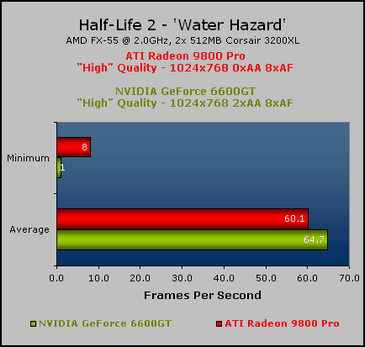
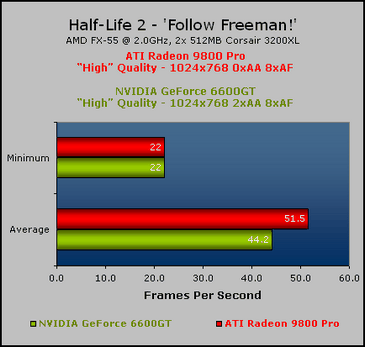
The Radeon 9800 Pro didn't get off lightly in our first manual run through either, with a drop to an equally poor 8 frames per second - although this issue is said to be fixed in version 1.0.1.0, we are still not seeing the removal of this rather annoying hitch on four of the six video cards tested here in this article. It is hard to say whether this is a driver issue, because it is not happening on the two GeForce 6800's. The 9800 Pro was capable of delivering a good frame rate in this manual run through with 2xAA applied, but it was our "Follow Freeman!" run through that caused the video card to come unstuck. Our minimum frame rate dropped to 17 frames per second, which was not ideal by any means - the average frame rate also dropped below 40 frames per second.
The GeForce 6600GT also suffered from the massive geometry load placed on the video card in our "Follow Freeman!" manual run through, but it remained playable through one of the most, if not the most graphic intense section of the title. The minimum frame rate was a fairly solid 22 frames per second, while the average was a fairly good 44 fps - despite the low frame rate, we did not experience lag or texture thrashing due to the high load placed on the video card with 2xAA enabled.

MSI MPG Velox 100R Chassis Review
October 14 2021 | 15:04




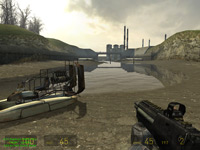
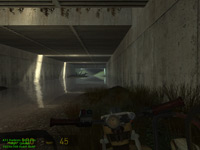
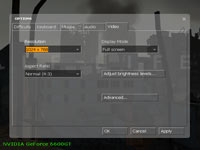

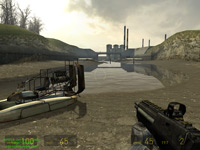
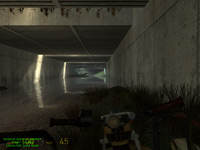






Want to comment? Please log in.